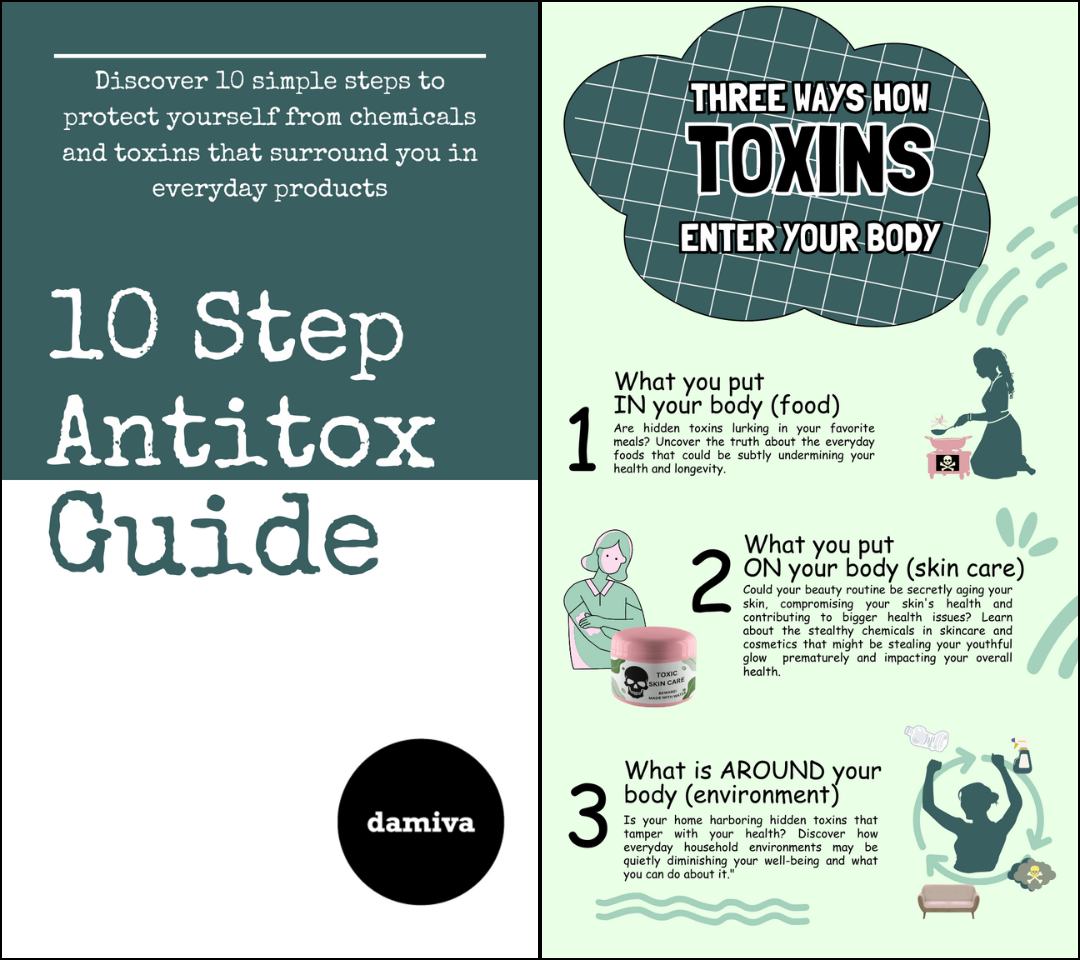
Introduction to Endocrine Disruptors
Defining Endocrine Disruptors
Endocrine disruptors are chemicals that can interfere with the endocrine (or hormone) system in mammals. These substances can cause adverse developmental, reproductive, neurological, and immune effects in both humans and wildlife. They work by mimicking or partly mimicking naturally occurring hormones in the body like estrogens, androgens, and thyroid hormones, potentially producing overstimulation. Alternatively, they may bind to a receptor within a cell and block the endogenous hormone from binding. The normal signal then fails to occur and the body fails to respond properly. Examples of endocrine disruptors include diethylstilbestrol (DES), dioxin, and polychlorinated biphenyls (PCBs).
Sources of Endocrine Disruptors
Endocrine disruptors can be found in a variety of sources in our everyday environment. They are prevalent in our food supply, where they may come from pesticides and herbicides used in agriculture, plastics and food packaging materials, additives and preservatives in processed foods, and hormones given to livestock. These chemicals can also be found in household products, personal care items, and in industrial chemicals and pollutants. The ubiquity of these substances means that they can be found virtually everywhere – from the food we eat to the water we drink.
Impact on Health and Well-being
The impact of endocrine disruptors on health and well-being can be profound. They have been linked to a range of health issues including hormonal imbalances, reproductive problems, obesity, diabetes, neurological issues, and certain types of cancer. The effects can be particularly severe for developing fetuses and young children, as they are more vulnerable to hormonal disruptions. The potential for these chemicals to accumulate in the body over time and to have long-lasting effects makes them a significant concern for public health.
Why Awareness is Critical
Awareness of endocrine disruptors is critical because it empowers individuals to make informed choices about their exposure to these chemicals. Understanding the sources and effects of endocrine disruptors can lead to better personal decisions regarding diet, lifestyle, and product usage. Moreover, increased public awareness can drive demand for safer products and more rigorous regulatory standards. As the science linking endocrine disruptors to health issues becomes clearer, it is essential for consumers to be proactive in protecting their health and that of future generations.
Do you know the 3 main ways how your body is exposed to harmful chemicals, which affect your hormones, your thyroid, health and beauty?
If not, it may be time to learn about them. It takes about 1-2 minutes.
We have a few suggestions how to avoid these silent health and immune system killers in our new guide.

Common Endocrine Disruptors in Food Products
Pesticides and Herbicides
The use of pesticides and herbicides in agriculture is widespread, and their residues can linger on fruits and vegetables, even after washing. These chemicals are designed to disrupt the endocrine systems of pests, but they can also affect human hormonal balance. Chronic exposure to these substances has been linked to a range of health issues, including reproductive problems, developmental delays in children, and certain cancers. To minimize exposure, it is recommended to consume organic produce when possible, especially for items known to have high pesticide residues.
Plastics and Food Packaging
Many food and beverage containers are made from plastics that contain chemicals like bisphenol-A (BPA) and phthalates. These endocrine disruptors can leach into food and drinks, especially when containers are heated or come into contact with fatty or acidic contents. Studies have shown that even low-dose exposure to these chemicals can be significant. To reduce the risk, opt for glass, stainless steel, or BPA-free containers, and avoid microwaving food in plastic packaging.
Additives and Preservatives
Processed foods often contain additives and preservatives that can act as endocrine disruptors. These chemicals extend shelf life and improve taste or texture, but they can also interfere with hormone function. For example, butylated hydroxyanisole (BHA) and butylated hydroxytoluene (BHT) are common preservatives with potential endocrine-disrupting effects. Reading labels and choosing products with fewer and more natural ingredients can help limit exposure to these additives.
Natural vs. Synthetic Hormones in Animal Products
Animal products, such as meat and dairy, can contain natural hormones or synthetic hormones used to promote growth in livestock. While the body naturally produces hormones like estrogen and testosterone, the additional intake from food sources can disrupt the body’s hormonal balance. There is particular concern over synthetic hormones, which can have more potent effects. Choosing hormone-free or organic animal products can help reduce exposure to these endocrine disruptors.
Key Takeaway: Endocrine disruptors in food products are a significant concern for health and well-being. By being mindful of the sources of these chemicals and making informed choices, consumers can reduce their exposure and protect their hormonal health.

Do you have the most commonly used but toxic, disease bringing chemicals in your skin care? Many chemicals in skincare are hormone disruptors and make menopause symptoms worse.
Find out more…
The Link Between Endocrine Disruptors and Aging
Hormonal Imbalances and Menopause
Endocrine disruptors can significantly affect hormonal balance, particularly in women approaching menopause. These chemicals can mimic or interfere with the body’s natural hormones, leading to exacerbated symptoms of menopause such as hot flashes, mood swings, and osteoporosis. The presence of endocrine disruptors may also contribute to the earlier onset of menopause, disrupting the natural timing of hormonal changes and potentially leading to a cascade of health issues related to premature aging.
Weight Gain and Metabolism
One of the most visible signs of aging influenced by endocrine disruptors is weight gain. These chemicals can interfere with metabolism, leading to an increase in fat storage and difficulty losing weight. Compounds such as bisphenols and phthalates have been linked to obesity and metabolic disorders, which are often more challenging to manage as we age. The disruption of thyroid function by these chemicals can also slow down metabolism, making it harder to maintain a healthy weight.
Energy Levels and Sleep Patterns
Endocrine disruptors can also affect energy levels and sleep patterns, both of which are crucial for healthy aging. By interfering with the production and regulation of hormones like cortisol and melatonin, these chemicals can lead to chronic fatigue and insomnia. Poor sleep quality has been associated with accelerated aging and an increased risk of age-related diseases, highlighting the importance of identifying and mitigating exposure to these invisible threats.
Mental and Sexual Health
Mental clarity and sexual health are two aspects of well-being that can be impacted by endocrine disruptors. These chemicals can affect cognitive function, potentially leading to memory loss and a decrease in concentration, which are often associated with aging. Additionally, endocrine disruptors can influence sexual health by altering sex hormone levels, leading to reduced libido, fertility issues, and other reproductive health problems. The psychological impact of these changes can further contribute to the perception of accelerated aging.
In conclusion, endocrine disruptors present in everyday food products can have profound effects on the aging process. By understanding the link between these chemicals and the symptoms of aging, individuals can make informed choices to protect their health and well-being as they grow older.
Do you know the three main ways that your body gets in touch with harmful chemicals with everyday products? Knowledge is Power!
The Ultimate Detox Guide will tell you how to lower your exposure to harmful chemicals!

Detecting Endocrine Disruptors in Your Pantry and Fridge
Reading Labels and Identifying Risks
Understanding the ingredients and materials in your food products is the first step in identifying potential endocrine disruptors. Look for key terms such as “phthalates,” “BPA,” “PVC,” and “polystyrene” on packaging. Be wary of vague terms like “fragrance,” which can mask a cocktail of chemicals, including phthalates. Additionally, recycling codes can be telling: for instance, “PC #7” may indicate the presence of BPA, while “PVC #3” is associated with phthalates. Prioritize products with clear, transparent labeling and those that are marked as BPA-free or phthalate-free.
The Dirty Dozen: Foods to Watch Out For
Some foods are more likely to contain high levels of endocrine disruptors due to their packaging or the nature of the product itself. The “Dirty Dozen” list, updated annually by the Environmental Working Group (EWG), highlights produce with the highest pesticide residues. In addition to these, be cautious with canned goods, certain dairy products in plastic containers, and meats packaged in plastic, as they can have significant phthalate content. Opt for fresh or frozen alternatives when possible, and consider the EWG’s recommendations for lower-risk conventional foods.
Safe Storage and Handling of Food
How you store and handle food can also impact your exposure to endocrine disruptors. Avoid microwaving food in plastic containers or using plastic wrap, as heat can cause chemicals to leach into your food. Instead, use glass or ceramic containers for heating and storing food. When it comes to cookware, opt for stainless steel or cast iron over non-stick pans that may release harmful substances. Regularly wash your hands, especially before eating, to remove any chemical residues, and keep your kitchen clean to minimize dust that may contain flame retardant chemicals.
Alternatives to High-Risk Foods
Choosing alternatives to high-risk foods can significantly reduce your exposure to endocrine disruptors. Select fresh, organic produce when possible, especially for items on the “Dirty Dozen” list. For meat and dairy, look for products from animals raised without added hormones and opt for glass-bottled milk or cheese wrapped in paper. When it comes to grains and legumes, buy dry goods and cook them yourself rather than relying on canned versions. By making these conscious choices, you can minimize the invisible threats lurking in your pantry and fridge.
By the way, something for you, a little gift!!!
I am just in the middle of publishing my book. It’s about How women can balance their hormones. One part is about food and diet, of course.
Follow this link and enter your email.
I will send you this part of the book for free once the book is published. It has many concrete, practical tips and recipes and will help you feel better during menopause or times of Big hormonal fluctuations.
Annette, Damiva Lead for Health & Wellness

Strategies for a Chemical-Free Diet
Choosing Organic and Locally-Sourced Foods
One of the most effective strategies for minimizing exposure to endocrine disruptors is to opt for organic and locally-sourced foods. Organic farming standards prohibit the use of synthetic pesticides and herbicides, which are common sources of endocrine disruptors. Locally-sourced foods are often fresher and have undergone less processing and packaging, further reducing the likelihood of chemical contamination. Additionally, supporting local farmers can lead to a more sustainable food system and a smaller carbon footprint.
The Benefits of Whole Foods Over Processed Foods
Whole foods, such as fruits, vegetables, grains, nuts, and seeds, are minimally processed and free from many additives and preservatives found in processed foods. These additives can act as endocrine disruptors. By choosing whole foods, you not only reduce your intake of harmful chemicals but also gain the nutritional benefits of consuming foods in their natural state. Whole foods provide essential nutrients that can help the body detoxify naturally and maintain hormonal balance.
Detoxifying Your Body from Endocrine Disruptors
Reducing the burden of endocrine disruptors on your body involves a proactive approach to detoxification. This includes regular hand washing to remove residues, dusting and vacuuming with a HEPA filter to eliminate household dust that may contain flame retardants, and choosing fragrance-free products to avoid phthalates. Additionally, avoiding plastic containers and opting for glass or stainless steel can reduce exposure to BPA and similar chemicals. When it comes to food, avoiding canned goods and choosing fresh or frozen alternatives can significantly lower your intake of BPA.
Incorporating Superfoods for Hormonal Balance
Some foods are known as “superfoods” due to their high nutrient density and potential health benefits. Many of these superfoods, such as cruciferous vegetables (broccoli, kale, and Brussels sprouts), berries, seeds (flaxseeds and chia seeds), and green tea, contain compounds that can help promote hormonal balance and support the body’s detoxification processes. Regularly incorporating these foods into your diet can help mitigate the effects of endocrine disruptors and contribute to overall well-being.
By making informed choices about the foods we eat and how we store and prepare them, we can significantly reduce our exposure to endocrine disruptors and their associated health risks. Embracing a chemical-free diet is not only beneficial for our hormonal health but also for the environment and future generations.

Popular Read: Endocrine Disruptors in Skincare: What You Need to Know
Beyond the Kitchen: Endocrine Disruptors in Personal Care
Cosmetics and Skincare Products
The quest for beauty and youth often leads us to an array of cosmetics and skincare products, but lurking within these potions and lotions are chemicals known as endocrine disruptors. These substances, which can mimic or interfere with the body’s hormones, are not always listed explicitly on product labels. Common culprits include parabens, phthalates, and certain UV filters. The skin, being the largest organ, absorbs these chemicals, which can then circulate in the bloodstream and disrupt hormonal balance.
Personal Hygiene Items
From deodorants to toothpaste, personal hygiene items are daily necessities. However, many of these products contain endocrine-disrupting chemicals (EDCs). For instance, triclosan, once a popular antibacterial agent in soaps and toothpaste, has been linked to hormone disruption. Similarly, some deodorants contain aluminum compounds and parabens, both of which have raised concerns regarding their estrogenic effects.
All-Natural Alternatives for Personal Care
Seeking natural alternatives can be a safer route to avoid exposure to harmful EDCs. Products labeled as “organic” or “all-natural” can be good options, but it’s essential to scrutinize the ingredients list for any hidden EDCs. Look for products with simple, recognizable ingredients, such as those based on essential oils, plant extracts, and minerals. Additionally, consider homemade remedies using ingredients like coconut oil, baking soda, and apple cider vinegar, which can serve multiple personal care needs without the risk of endocrine disruption.
Understanding Labels on Personal Care Products
Deciphering product labels is crucial in identifying and avoiding endocrine disruptors. Words to watch out for include “fragrance” or “parfum,” which can be a cover for phthalates, and names ending in “-paraben.” Certifications like “Cruelty-Free” and “Paraben-Free” can be helpful indicators, but they do not guarantee a product is free from all EDCs. It’s also wise to research brands committed to avoiding EDCs and to consult databases from environmental health organizations that list safer products.
The best tip is to avoid any water-based skincare products: Because water is a breeding ground for microbes, brands and manufacturers need to add synthetic chemicals as preservatives. And many of these are harmful for humans, animals and environment as they disturb the hormone system, can cause cancer, reduce fertility, etc. Choosing water-free lotions, creams and balms (which can be made without chemicals) is an easy way to avoid these added chemicals.
In conclusion, while endocrine disruptors in personal care items are an invisible threat, informed choices and a proactive approach to personal care can significantly reduce your exposure. Embrace natural alternatives, become a label-reading expert, and support brands that prioritize your hormonal health. By doing so, you can take a stand against the invisible threat of endocrine disruptors and protect your well-being.
Empowering Choices: Taking Control of Your Health
Educational Resources and Trusted Information
Knowledge is power, especially when it comes to understanding the impact of endocrine disruptors on our health. Accessing educational resources and trusted information is the first step towards making informed decisions. Websites of reputable health organizations, peer-reviewed journals, and government agencies like the Environmental Protection Agency (EPA) and the Food and Drug Administration (FDA) provide valuable insights. Additionally, books and documentaries by experts in the field can offer in-depth analysis and guidance on navigating the complexities of endocrine disruptors.
Building a Supportive Community
Creating a supportive community can be instrumental in maintaining a healthy lifestyle free from endocrine disruptors. Engaging with local groups, online forums, and social media networks can provide encouragement and share practical tips. Community gardens, farmers’ markets, and co-ops are excellent places to find like-minded individuals committed to a chemical-free diet. Together, you can exchange recipes, shopping advice, and even advocate for local policy changes.
Advocating for Transparency and Regulation
As consumers, we have the right to know what’s in our food and products. Advocating for transparency and regulation is crucial. This can involve supporting initiatives that require clear labeling of chemicals in products, pushing for stricter regulations on endocrine disruptors, and voting for representatives who prioritize public health. By voicing concerns and staying active in community and political discussions, we can drive change towards safer consumer products and food systems.
Personal Action Plan for a Healthier Lifestyle
Developing a personal action plan for a healthier lifestyle is a proactive way to reduce exposure to endocrine disruptors. This plan might include steps such as:
- Regularly updating your knowledge on endocrine disruptors and their sources.
- Gradually replacing high-risk foods with organic and whole food alternatives.
- Implementing safe food storage practices to minimize leaching of chemicals from plastics.
- Choosing personal care and household products with natural ingredients and without harmful chemicals.
- Engaging in a detoxifying routine to help your body eliminate accumulated toxins.
By setting clear goals and tracking progress, you can ensure that your choices align with your health and wellness objectives.
Ultimately, taking control of your health in the face of endocrine disruptors is about being proactive, informed, and engaged. By utilizing educational resources, building a supportive community, advocating for better regulations, and following a personal action plan, you can navigate the invisible threats and lead a healthier, more empowered life.








